American Independent Party
American Independent Party | |
|---|---|
| Chairman | Markham Robinson (CA)[1] |
| Vice Chairman | Mark Seidenberg (CA)[1] |
| Founded | July 8, 1967 |
| Headquarters | 476 Deodara St. Vacaville, California 95688 |
| Ideology | Paleoconservatism[2] |
| Political position | Far-right[3][4][5][6] |
| National affiliation | America's Party[7] |
| Colors | Purple |
| State Senate | 0 / 40 |
| State House | 0 / 80 |
| Website | |
| aipca | |
American Independent Party is a right-wing political party of the United States founded in California in 1967 by Bill and Eileen Shearer. It is most notable for George Wallace running in the 1968 US Election. That year, it was made up of Democrats opposed to the ending of racial segregation and was most successful in Southern states (Wallace was governor of the Southern state of Alabama).
Over time, the party became closer to the conservative movement and it renounced its policy against racial equality. Today, the party still exists but many of its members have left: most of the earlier members returned to the Democratic Party after the 1969 election and its later members have moved to the Constitution Party. The AIP has endorsed the Constitution Party nominee for President in recent years.
Background information[change | change source]

In 1967, the AIP was founded by Bill Shearer and his wife, Eileen Knowland Shearer. It nominated George C. Wallace (Democrat) as its presidential candidate and retired U.S. Air Force General Curtis E. LeMay as the vice-presidential candidate. Wallace ran on every state ballot in the election, though he did not represent the American Independent Party in all fifty states: in Connecticut, for instance, he was listed on the ballot as the nominee of the "George Wallace Party." The Wallace/LeMay ticket received 13.5 percent of the popular vote and 46 electoral votes from the states of Arkansas, Louisiana, Mississippi, Georgia, and Alabama. No third-party candidate has won more than one electoral vote since the 1968 election.[8][9]
Presidential tickets[change | change source]
| Year | Presidential nominee[10] | Home state | Previous positions | Vice presidential nominee | Home state | Previous positions | Votes | References |
|---|---|---|---|---|---|---|---|---|
| 1968 | 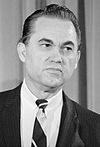 George Wallace Democratic (campaign) |
Governor of Alabama (1963–1967) |
 Curtis LeMay |
General of the United States Air Force (1951–1965) Commander-in-Chief of the Strategic Air Command (1948–1957) Vice Chief of Staff of the Air Force (1957–1961) Chief of Staff of the Air Force (1961–1965) |
9,906,473 (13.5%) 46 EV |
[11] | ||
| 1972 | 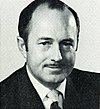 John G. Schmitz |
Member of the United States House of Representatives from California's 35th district (1970–1973) |
 Thomas J. Anderson |
Magazine publisher | 1,099,482 (1.4%) 0 EV |
|||
| 1976 |  Lester Maddox |
Governor of Georgia (1967–1971) Lieutenant Governor of Georgia (1971–1975) |
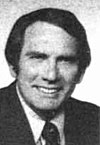 William Dyke |
Mayor of Madison (1969–1973) Candidate for Governor of Wisconsin (1974) |
170,531 (0.2%) 0 EV |
|||
| 1980 |  John Rarick |
Member of the U.S. House of Representatives from Louisiana's 6th district (1967–1975) |
Eileen Shearer | Co-founder of the American Independent Party | 41,268 (<0.1%) 0 EV |
|||
| 1984 |  Bob Richards (Populist) |
Retired Olympic athlete (1948; 1952; 1956) |
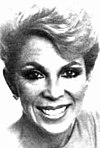 Maureen Kennedy Salaman |
Writer, nutritionist | 66,336 (0.1%) 0 EV |
|||
| 1988 | James C. Griffin | Nominee for United States Senator from California (1980) Nominee for Governor of California (1982) Nominee for Lieutenant Governor of California (1986) |
Charles Morsa | 27,818 (<0.1%) 0 EV |
||||
| 1992 | 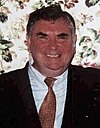 Howard Phillips (U.S. Taxpayers') |
Chairman of The Conservative Caucus Candidate for United States Senator from Massachusetts (1978) |
Albion W. Knight | Presiding Bishop of the United Episcopal Church of North America (1989–1992) |
43,369 (<0.1%) 0 EV |
|||
| 1996 |  Howard Phillips (U.S. Taxpayers') |
Chairman of The Conservative Caucus Candidate for United States Senator from Massachusetts (1978) Nominee for President of the United States (1992) |
Herbert Titus | Lawyer, writer | 184,656 (0.2%) 0 EV |
|||
| 2000 |  Howard Phillips (Constitution) |
Chairman of The Conservative Caucus Candidate for United States Senator from Massachusetts (1978) Nominee for President of the United States (1992; 1996) |
Curtis Frazier | Candidate for United States Senator from Missouri (1998) |
98,020 (0.1%) 0 EV |
[12] | ||
| 2004 | Michael Peroutka (Constitution) |
Lawyer Founder of the Institute on the Constitution |
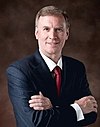 Chuck Baldwin |
Pastor, radio host | 143,630 (0.1%) 0 EV |
|||
| 2008 |  Alan Keyes (America's Independent) |
Assistant Secretary of State for International Organization Affairs (1985–1987) Candidate for United States Senator from Maryland (1988; 1992) Candidate for President of the United States (1996; 2000) Candidate for United States Senator from Illinois (2004) |
Wiley Drake | Minister, radio host | 47,694 (<0.1%) 0 EV |
|||
| 2012 | Tom Hoefling (America's) |
Activist | Robert Ornelas | Activist | 40,641 (<0.1%) 0 EV |
|||
| 2016 |  Donald Trump (Republican) |
Businessman Chairman of The Trump Organization (1971–2017) |
 Mike Pence |
Member of the U.S. House of Representatives from Indiana's 2nd district (2001–2003) Member of the U.S. House of Representatives from Indiana's 6th district (2003–2013) Governor of Indiana (2013–2017) |
62,984,825 (46.1%) 304 EV |
[13] | ||
| 2020 | Rocky De La Fuente (Alliance; Reform) |
Businessman and perennial candidate |  Kanye West (Independent; Birthday) |
Rapper, producer and fashion designer; 2020 presidential candidate |
60,160 (0.34%) 0 EV | [14] |
Since the fracture of the American Independent Party between the King and Noonan factions, control of the State Party, and thus the ballot line, has been in the hands of the Noonan faction. Attempts to nominate Chuck Baldwin (the 2008 Constitution nominee) or Virgil Goode (the 2012 Constitution nominee) were unsuccessful, as were their independent efforts to make it onto the California presidential ballot.
References[change | change source]
- ↑ 1.0 1.1 "American Independent Party Leadership, State Central Committee for Term Ending 09/03/2020". American Independent Party. 2019. Archived from the original on 2021-02-25. Retrieved 2021-01-16.
- ↑ John Myers, Would-be independents joining the American Independent Party could blame California's voter registration card, Los Angeles Times (April 19, 2016).
- ↑ James Aho, Far-Right Fantasy: A Sociology of American Religion and Politics (Routledge, 2015), p. 15.
- ↑ George Michael, Willis Carto and the American Far Right (University Press of Florida, 2008), p. 160.
- ↑ Martin Durham, The Christian Right, the Far Right and the Boundaries of American Conservatism (Manchester University Press, 2000), p. 8.
- ↑ "Many American Independent Party voters in California are mis-registered".
- ↑ "History of the American Independent Party". American Independent Party. 2011. Archived from the original on 2018-12-24. Retrieved 2021-01-16.
- ↑ Chrostopher D. Rodkey, "Third Parties" in Culture Wars: An Encyclopedia of Issues, Viewpoints and Voices (eds. Roger Chapman & James Ciment: 2d ed: Routledge, 2015), p. 665.
- ↑ ""Conservative third parties since the New Deal" in The Princeton Encyclopedia of American Political History (Vol. 1) (eds. Michael Kazin, Rebecca Edwards & Adam Rothman: Princeton University Press, 2010), p. 195.
- ↑ And political party if different from the AIP.
- ↑ Wallace and LeMay carried five states, receiving 45 electoral votes, plus one from a North Carolina faithless elector.
- ↑ Joseph Sobran was the original vice presidential nominee, but he withdrew from the ticket and was replaced by Frazier.
- ↑ Mejia Davis, Edward. "Trump is the nominee of George Wallace's American Independent Party in California". CNN. Retrieved 29 October 2020.
- ↑ Winger, Richard (August 15, 2020). "American Independent Party Nominates Rocky De La Fuente for President and Kanye West for Vice-President". Ballot Access News. Archived from the original on August 15, 2020. Retrieved January 16, 2021.
